Time to join forces under a global fashion blockchain, for a more sustainable industry and a better world.
The issue with fashion is that some get it, and some don’t. But that’s just fine as fashion trends and styles are not for everybody.
However, one thing is for sure. Fashionable or not, wearing clothes is required by law.
Irrespective of gender, age, political views or religion, we all must be dressed while outdoors.
The requirement of wearing clothes in public might never change.
Yet, as the fashion industry keeps growing, the garments we wear and their composite materials will keep evolving and improving as well.
From the dawn of civilization – when animal skins and leaves were the only covers we had – to the modern era of smart, innovative, cruelty-free and sustainable fabrics, fashion has come a long way.
The Need For A Global Fashion Blockchain

Half a decade ago, the advent of wearable technology and smart sensors seemed to take the fashion industry to the next level.
Designed to collect biometric data and interact with the surrounding environment, the future of connected fashion seemed brighter than ever.
And yet, it never took off.
Some attribute the failure of connected fashion to the designer’s lack of fashion design skills.
You see, these fashion tech enthusiasts were first and foremost tech-heads, rather than well-established designers of apparel.
Then, ignoring consumer behaviour could have been another contributor to the failure of connected garments.
As fashion’s primordial role is to make a statement, to communicate one’s status and only then, to fulfill functional means.
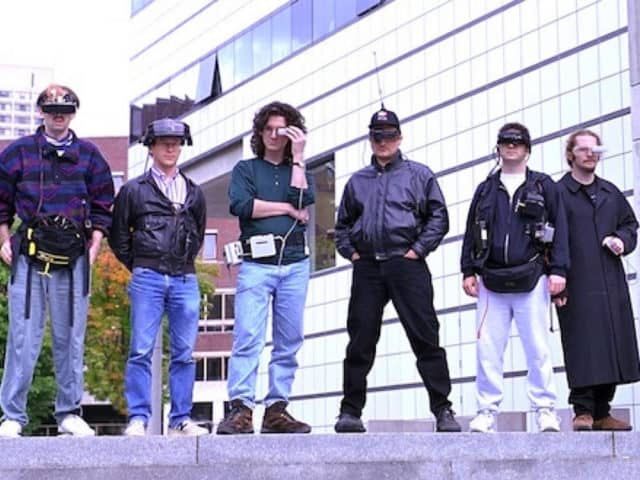
I’ve covered the failure of connected fashion in many of my previous articles, at Business Insider and TEDx.
Will cover it again here, as my sole purpose is to help emerging fashion designers learn from past mistakes and make the most of the latest innovations in fashion.
But, apart from ignoring consumer behaviour and missing the basics of fashion design, there was something else that hindered the emergence of connected garments.
The lack of sufficient bandwidth, now available in the shape of 5G, and the missing global database, available now as ‘the blockchain’ technology.
We’ll cover 5G later on, For now, we’ll focus on the blockchain technology.
In simple terms, a blockchain is a list of records.
A ledger, if you like, where the data is recorded in blocks that can’t be deleted or removed.
These blocks are linked together and secured using advanced cryptography.
Each block contains a hash pointer – as a link to a previous block – a timestamp, transaction data, and user-defined info.
By design, blockchains are temper-resistant.
Once the data has been recorded, it can no longer be modified.
So why would a global fashion blockchain be so relevant to the fashion industry in general, innovation, and the future of smart garments in particular?
Blockchain for Sustainable Fashion – Ending Counterfeiting & Greenwashing
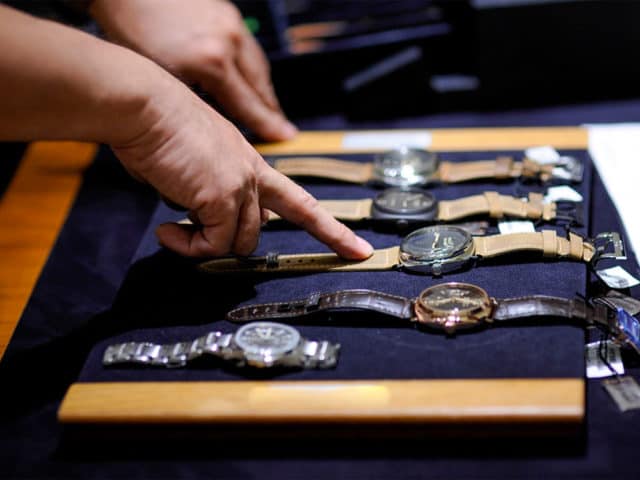
From an industry point of view, a global fashion blockchain will keep account of all garments, shoes, accessories, and all products ever sold.
It will record the materials’ origin, stop product counterfeiting and greenwashing.
To conscious consumers, fashion blockchain is the holy grail.
To see if the dress you’re about to buy is genuine, eco-friendly, and cruelty-free (as advertised), all you’ll have to do is scan the label with your smartphone.
But, there’s so much more we can do with a global fashion blockchain, as we’ll see in the case of connected garments.
Digital Profiles On Blockchain – The Story of Avery
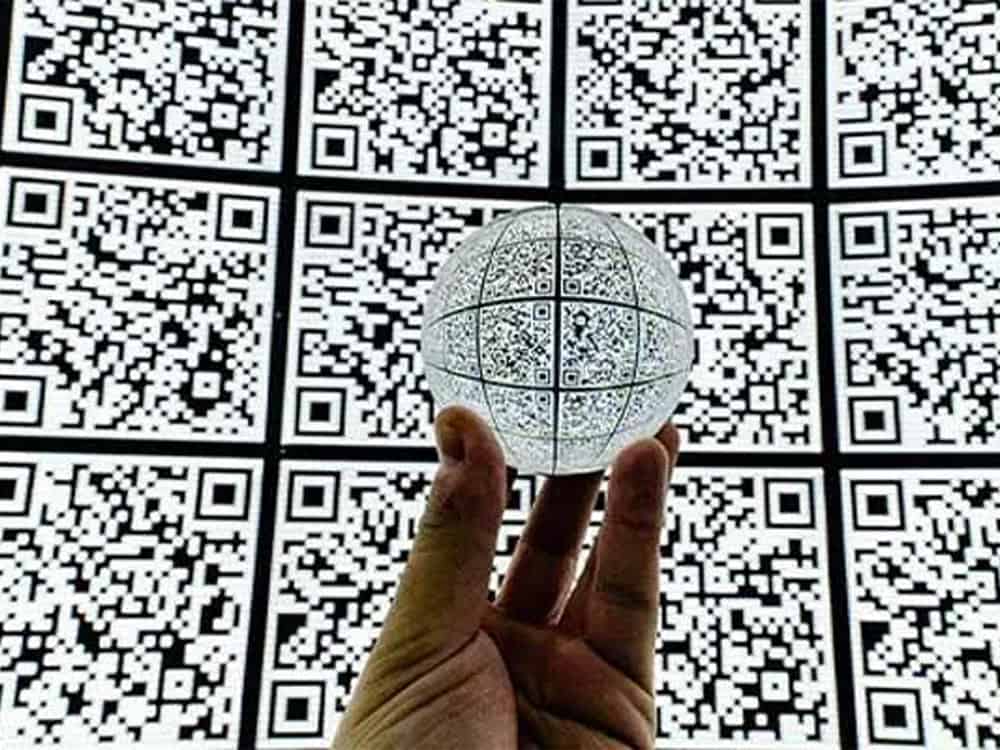
The story starts with Avery Dennison – world’s number one supplier of care labels.
The American label manufacturer counts Nike, Hugo Boss, and Under Armour amongst its vast clientele.
Avery’s next step is to use blockchain to track billions of labels.
Either own chain, or a third party chain where brands can record their ethical manufacturing practices, sustainable materials origin, and products authenticity – to combat counterfeiting.
On the blockchain, Avery will record the company name, garment type, size, provenience of material used, warranty, expiry date, and price, all in a highly secure and immutable manner.
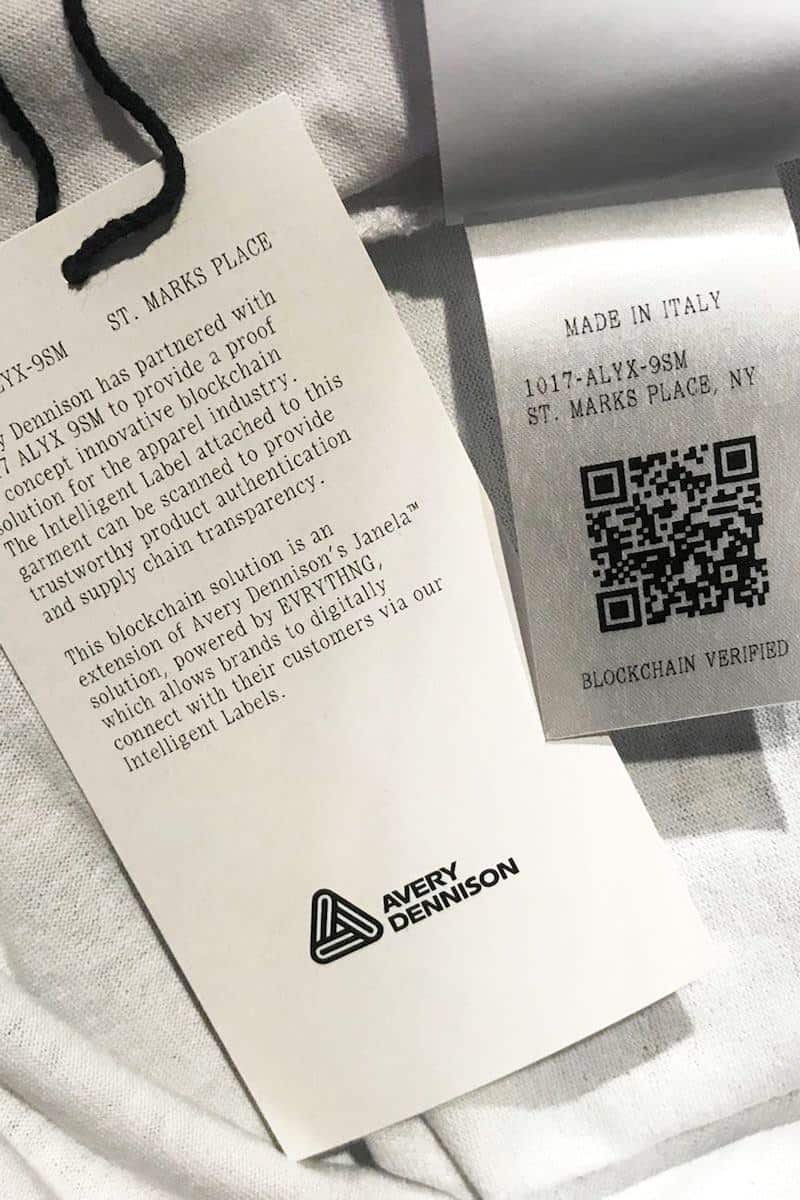
Moreover, as blockchains are scalable and customizable by nature, any future innovations would be easy to implement.
Avery’s next-generation of the care labels will collect environmental, GPS, and biometrics data.
These smart labels will ‘know’ if it’s cold, raining, or snowing outside.
And, as the label is in close contact with your skin, it will know if you’re sick, in danger, or lost.
These smart labels will exchange data in real-time with your digital profile, also located on the blockchain.
When you buy a new jumper or pair of shoes, the smart care label turns uses your heartbeat to identify and connect to your blockchain-based digital profile.
Once connected, it syncs with your digital profile and continuously sends surrounding, and biometric data.
Fashion Blockchain Solutions: Your Bra Has Called The Doctor

With the help of a smart label, a new generation of smart garments, shoes, and accessories will emerge.
Garments that collect your biometric data and place it on the blockchain, on your immutable account.
That blockchain account will become a centralised point of user monitoring and maintenance.
With the data sent in real-time, by your shoes, to the blockchain, your doctor will know in advance if something bad is about to happen.
Pre-defined signals will send medical teams to your home before you’ll know you’re having a heart attack.
Just like Dr David Sinclair beautifully described in his book, smart fashion will help us diagnose cancer and other diseases at the earliest possible stages.
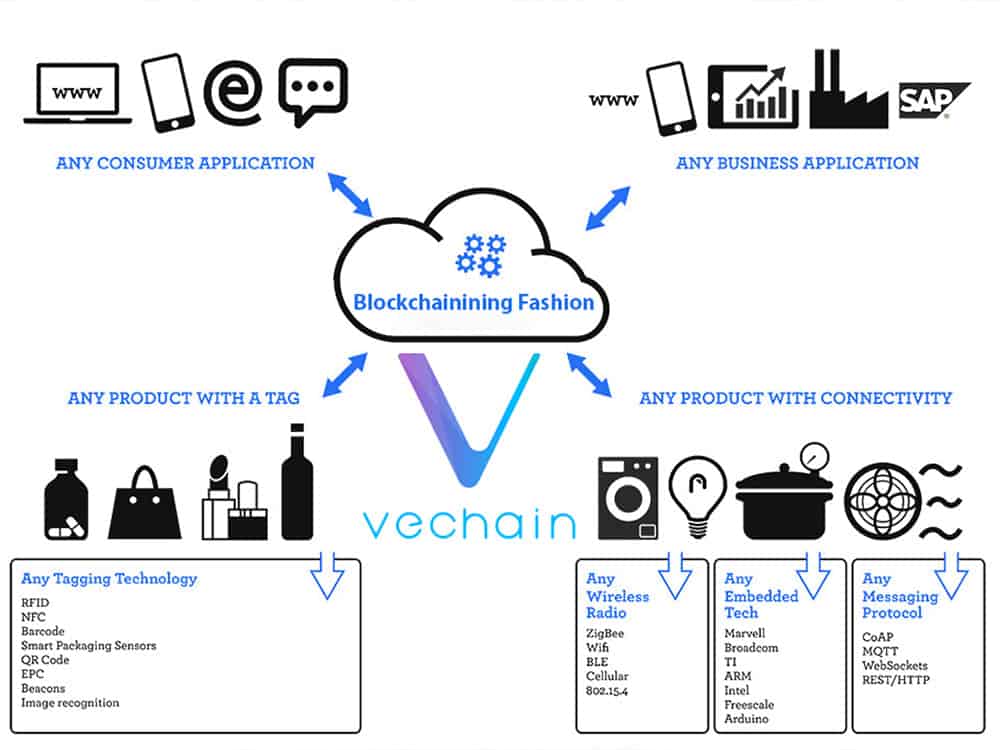
I have chosen VeChain for the pic above, to exemplify the potential of a fashion blockchain.
VeChain has approached many of our partners and prestigious luxury houses across the world, to embark on similar projects to the one described above.
However, given the size of its blocks, VeChain’s blockchain is limited, unable to scale past customised NFC labels embossed on physical goods.
As PhD researchers, together with my business partner, we see Bitcoin SV’s blockchain as the most suitable solution to the scenario above.
Moreover, nChain’s Metanet – the development company behind the BSV blockchain – is the only way towards a future of M2M communications, crypto transactions and micropayments.

nChain’s innovation has ample ‘room’ for growth, not just for smart labels.
With unlimited bocks, BitcoinSV’s chain is ready for the next wave of AR/VR fashion.
With extensive experiential content, AR/VR fashion universe requires not just high speeds but also tremendous amounts of storage.
In the future fashion VR environment, users will ‘cheaply’ access brand’s heritage.
Consumers will get to ‘see’ artisans at work.
Will be able to ‘check’ the provenience of materials used, and ‘learn’ first hand how to best care for their products.
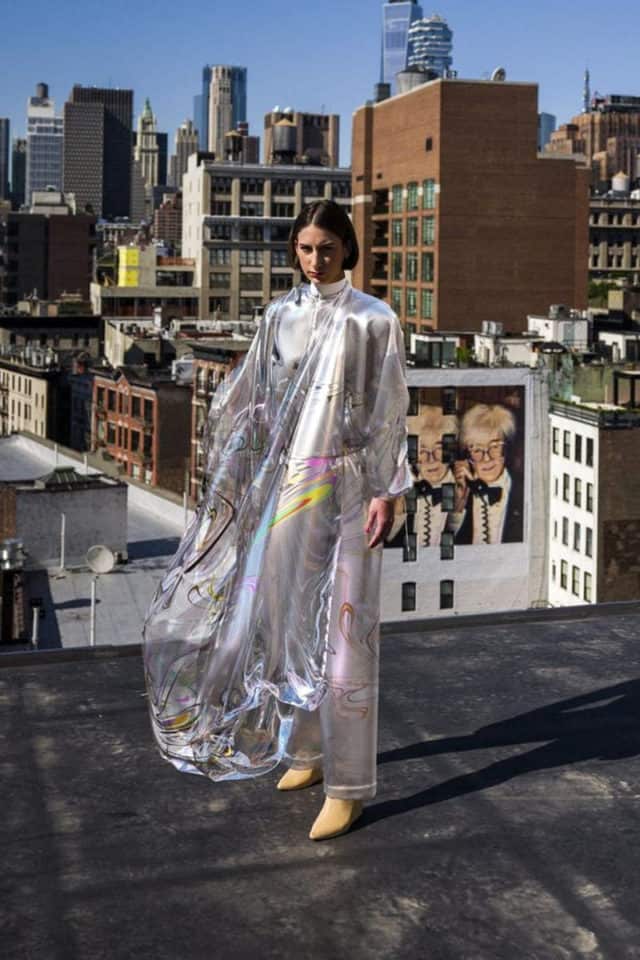
With the help of smart labels sending data to a unified, global fashion blockchain, the fashion products of tomorrow will ‘speak’ to us.
You’ll receive SMS texts from your label pointing to a handbag malfunction.
Or, a prompt notification on WhatsApp messenger asking for regular maintenance of your sneakers.
And, at the end of their life, you’ll get a final email instructing you on how to best recycle your shoes.
Role of Blockchain Technology
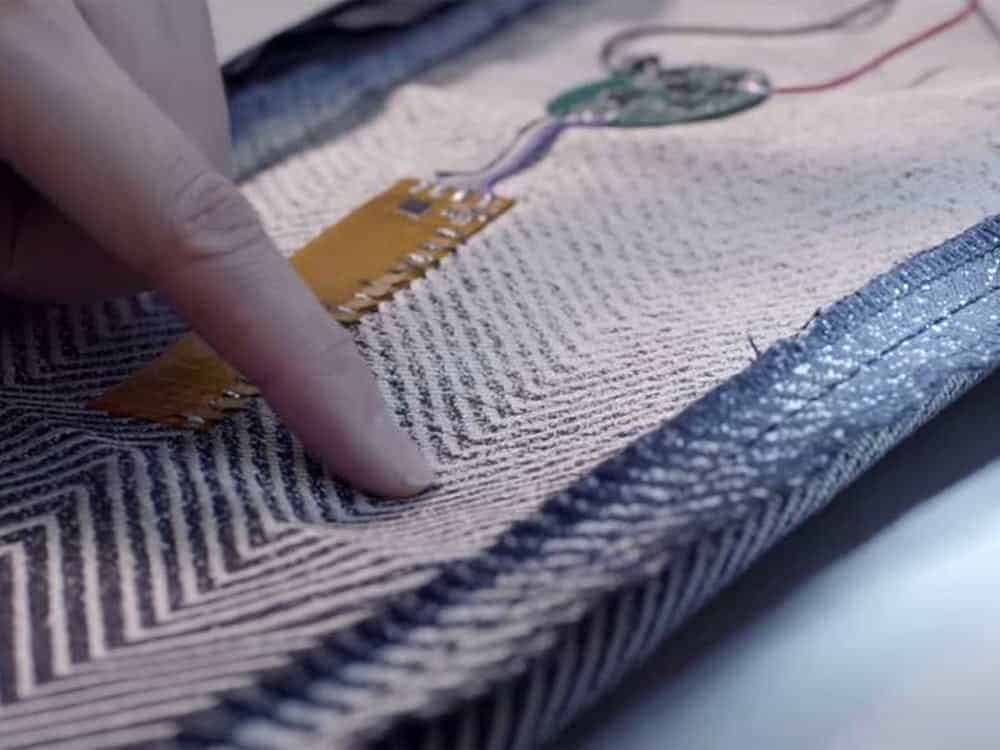
The idea of smart labels is nothing new.
Developed by researchers at Harvard University, over a decade ago, smart tags are already present in smartphones, food, toys, and even humans.
“Here we demonstrate a simple process of transforming general cotton threads into intelligent e-textiles using a polyelectrolyte-based coating with carbon nanotubes…to detect albumin, key proteins, blood, with high accuracy.”
Nano Letters, vol. 8. Issue 12, pp. 4151-4157. December 2008; Wearable Fabrics For Human Biomonitoring.
What’s new here is the blockchain technology.
It provides an immutable ledger ready for a new era smart tags that can collect granular data, then write and synchronise it live on the blockchain.
Fashion Blockchain and Creativity
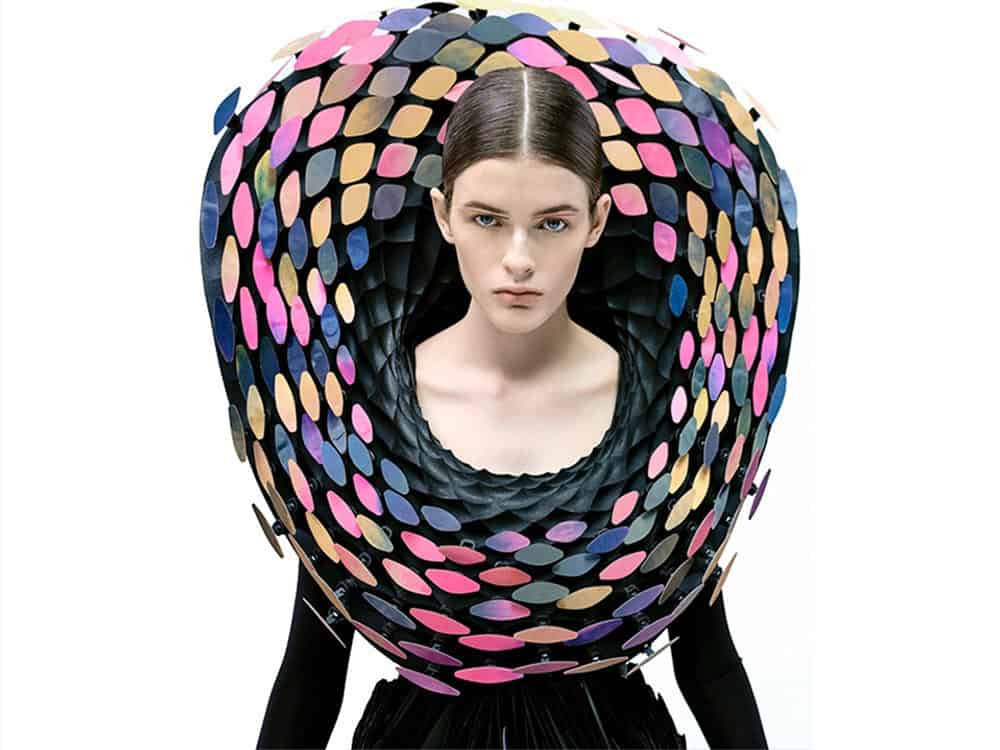
Fashion design has always relied on our imagination. We, humans, do not lack that.
But now, with the help of blockchain, a new form of fashion design will be deployed and allowed to grow. The artificial intelligence fashion designer.
Sophisticated algorithms will start exploring data stored on the unified global fashion blockchain.
Initially, it’ll help the fashion designers of tomorrow take the guesswork out of the equation.
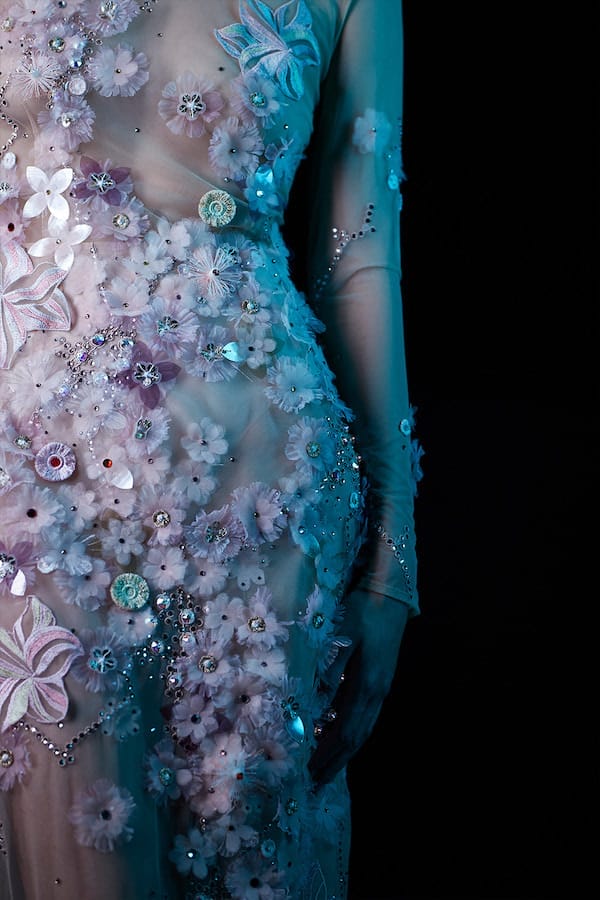
The AI will use the environmental, geographic, and biometric data collected by the smart labels to decipher consumption ‘footprints.’
Data that will provide the fashion designer with highly accurate information such as choice materials, colours, trends, and much more.
The AI will provide fashion designers with comprehensive insights into consumer segments and further opportunities, beyond past sales and Instagram conversational data.
But, for all of these to become a reality, we all have to embrace the idea of a unified, global fashion blockchain.
One blockchain that rules them all.
You Might Also Like:
This article is a guest post by the VOU.
Author Bio: Laurenti Arnault is the founder of the VOU, a leading luxury fashion publication.
*Article updated 06/05/25.









